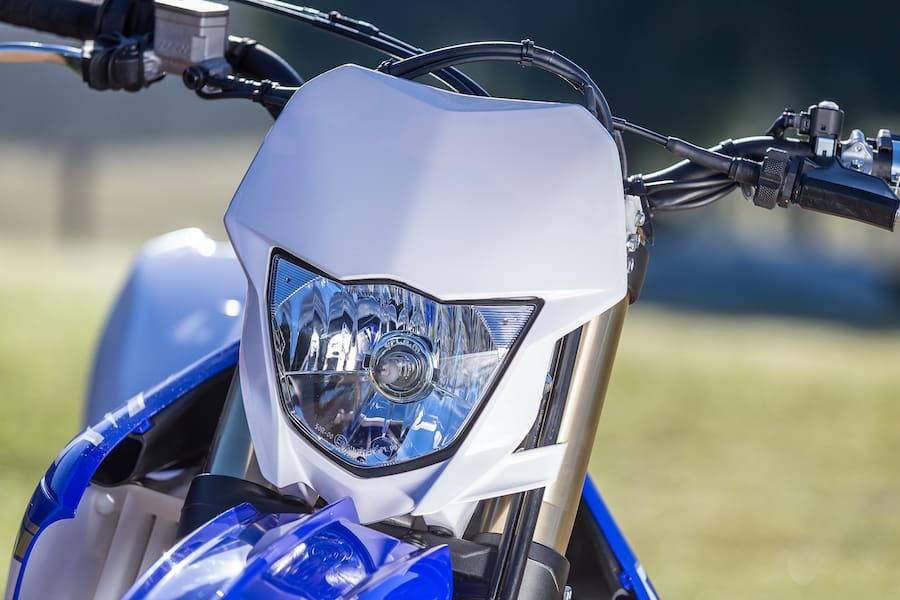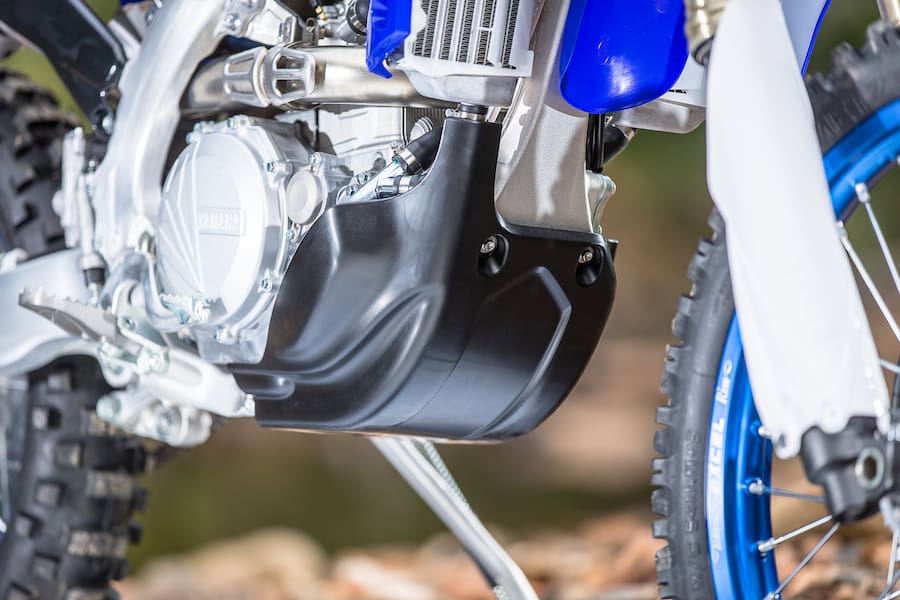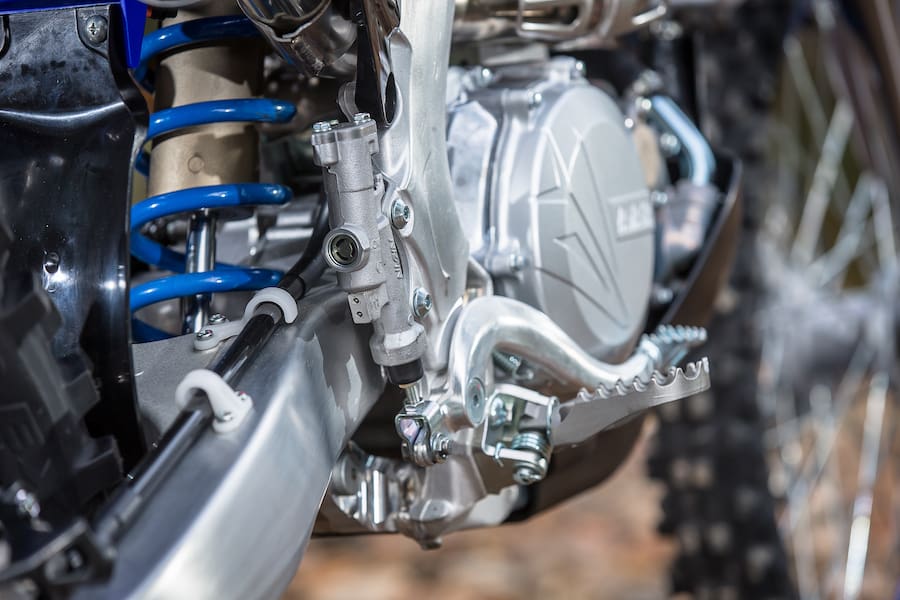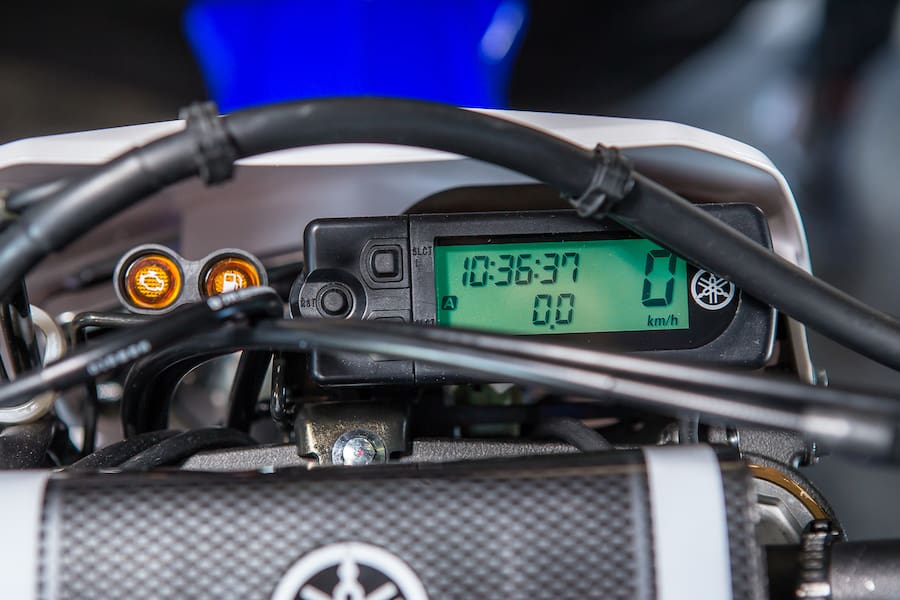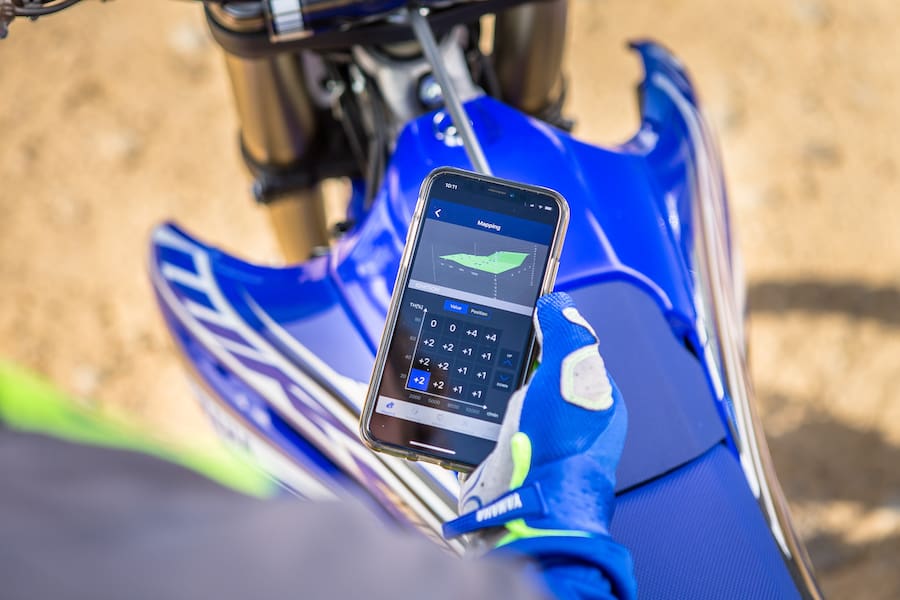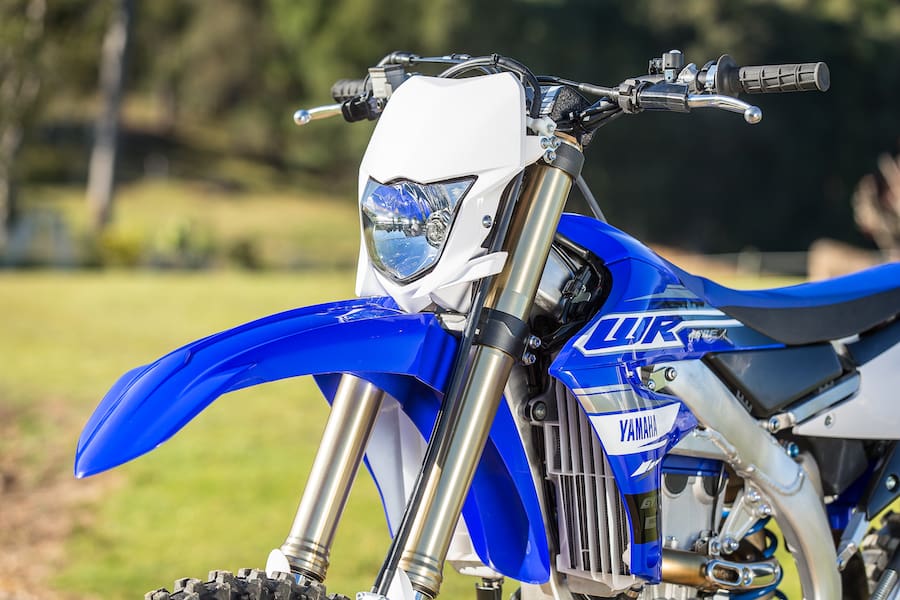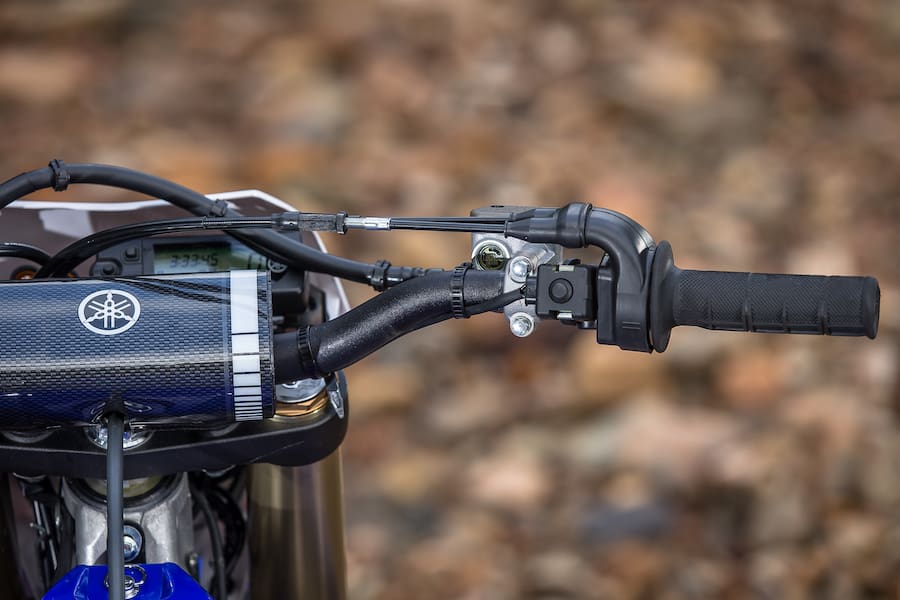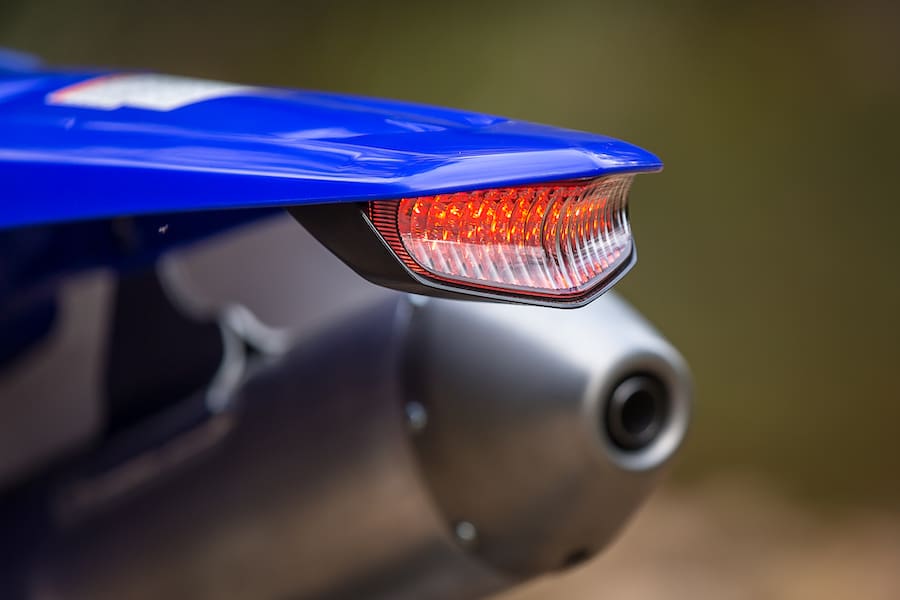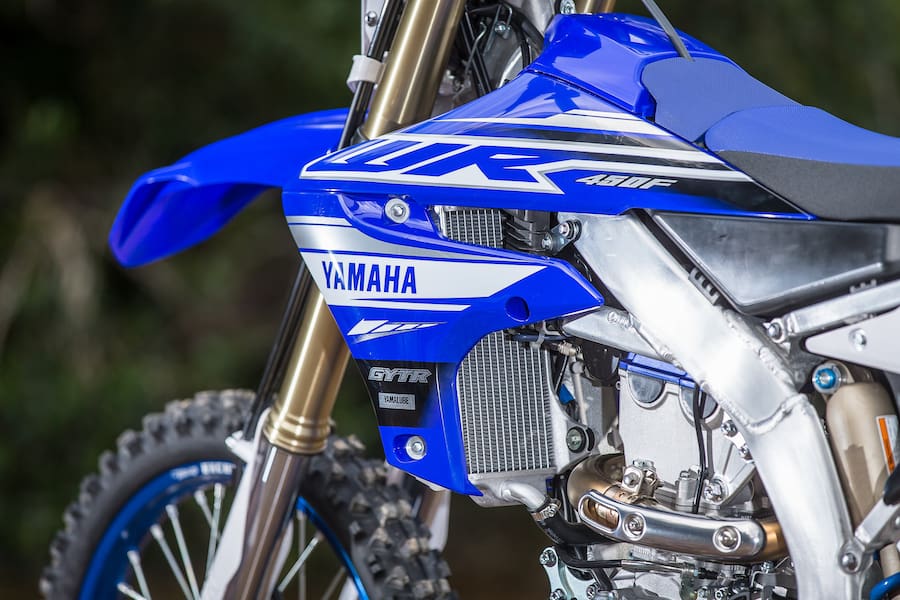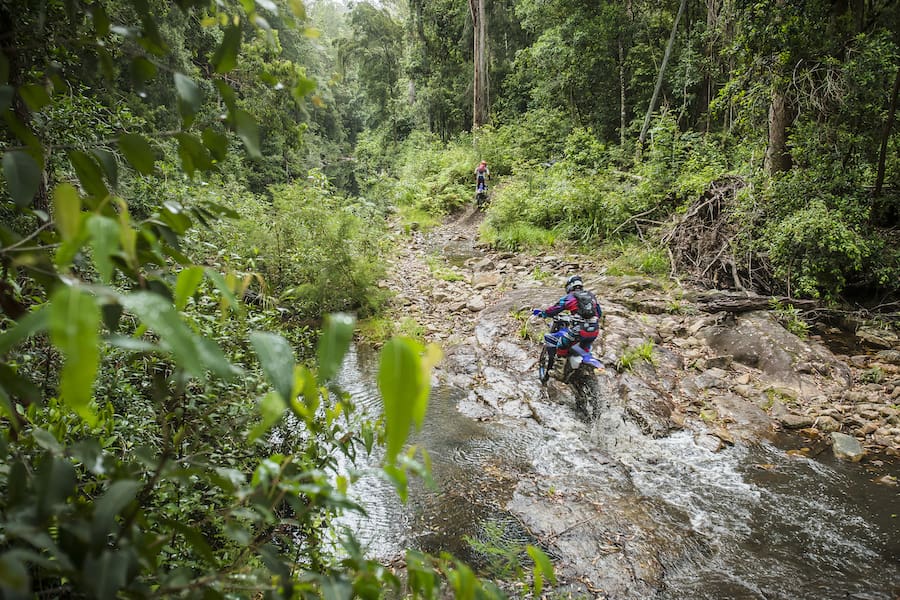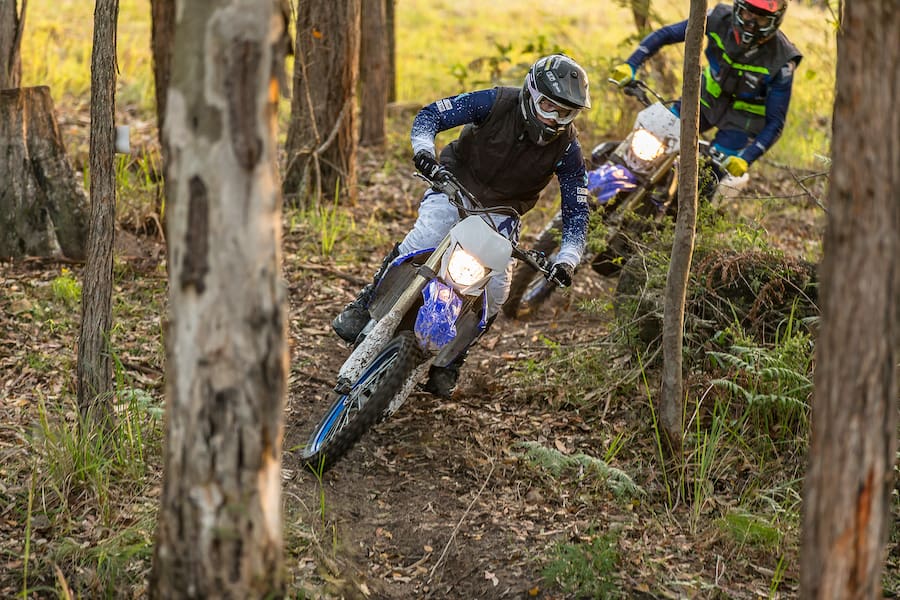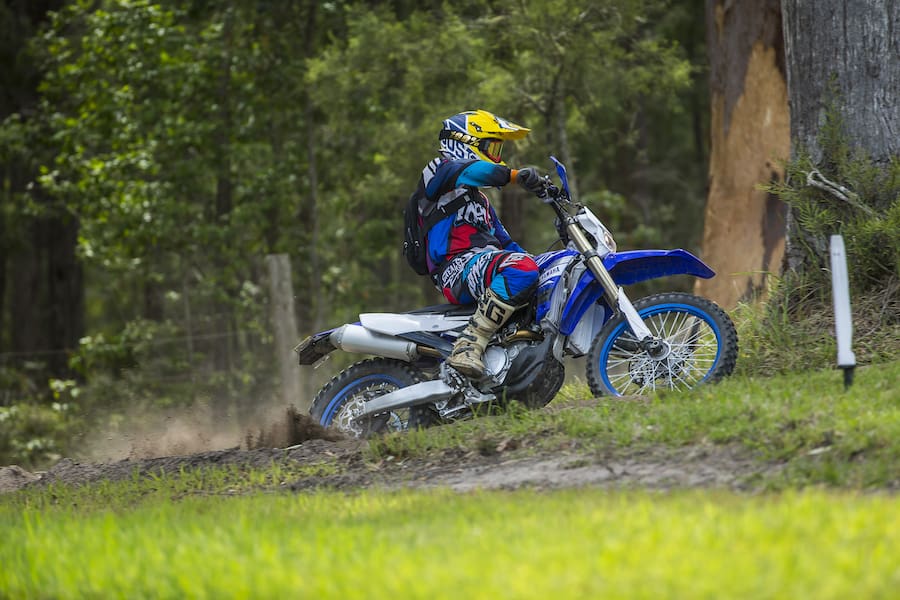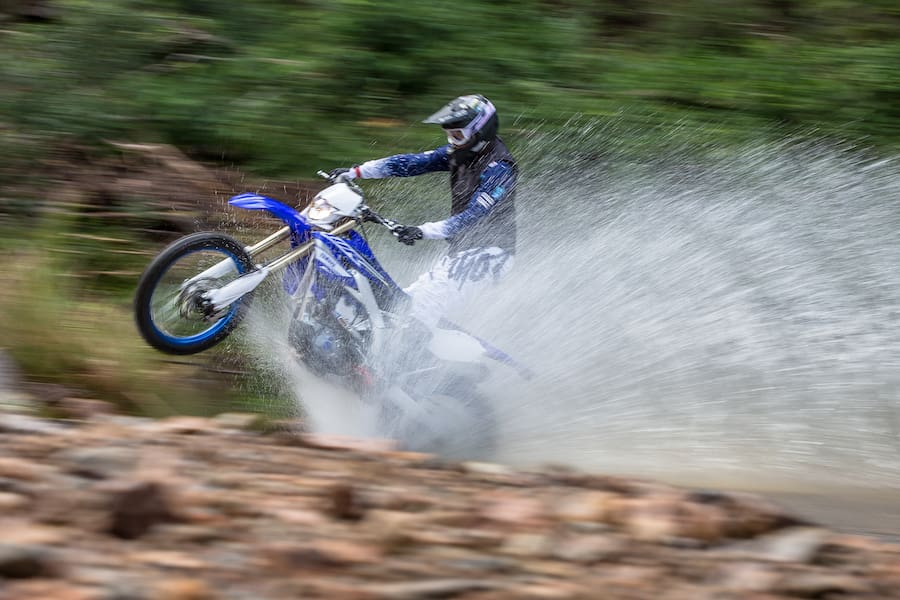When it comes to two wheeled challenges, I followed my long tradition of jumping off a cliff and building my plane on the way down at the launch of the 2019 Yamaha WR450F. I just wasn’t expecting an actual cliff to be part of the equation.
It may have been a so-called global launch held in Stroud, NSW, but only Aussies and Kiwis were present. That’s because the Australasian appetite for this bike is off the charts – we buy around 1500 of these a year, the number in America is around 300. I was pretty sure I was going to adjust the number in Australia by minus one…
It was a two-day launch; two grass tracks and a cool bush loop on the opening day and a trailride on the second – and this was where I was getting myself in trouble.
The day on the grasstrack told me the 2019 WR450F is, like the model before it, a fire breather. But I knew it would be. Yamaha has made the bike more compact and the shorter, overall lower bike is certainly more manageable in the cockpit – it’s more wieldy, allowing the rider to climb all over it easier, as you do when grimacing your way up a gnarly hill. But it’s still very much motocross-based.
The YZ450F leant plenty of bits to this new enduro bike, and you can’t take the MX out of such a bike easily.

Back in the day, older WRs were the easiest to ride of all the enduro bikes, with mellow power delivery, too-plush suspension and a chassis that gave lots of mellow feedback. This has changed, but not too far into the motocross spectrum that the average trailrider can’t find something they love about the blue bike.
The average trailrider will find the suspension hard to manage at first, like I did given the bikes had only a few kilometres on them – the WR’s boingers need time to bed in and settle down. By half-way through the trailride, the bike has settled into a much more balanced, compliant ride than it was fresh out of the box the day before. Why a manufacturer would give us brand new bikes to test, I’ll never understand. These bikes were getting better and better as the launch went on.
Even as they settled down, the chassis and suspension set up is still firmer and less forgiving than the 2010-spec WR450F (the last major update), so if you are upgrading from an older beast, keep that in mind. Of course, the 2019 has some features that not only leave that 2010 model in the dark, but help manage the incredible punch this bike can produce. The phone app, for instance, is a gem and for some people, reason enough to by this bike alone.
The engine, brand new as it was and in standard tune, was too motocross for me. I want a tractor in the bush, and to be able to carry third gear through singletrack. But that’s where the Yamaha Power Tuner App and dual map switch comes in.
I punched it straight to map two for a mellower throttle response in the first 40 percent of throttle, and then dived into the fuelling and ignition amps to smooth the transition from bottom-end to mid-range, the two areas I spend the most time in while trailriding a 450F.
I did this by starting with the basic map, then gradually adding fuel and retarding ignition to mellow the beast out. No, you can’t break it by using the wrong combination, Yamaha has made sure of that by keeping the parameters within reason. You then upload your new map using the wifi connection to the bike (including the password, so riders can’t hilariously upload doughy maps to rival’s bikes just before a race) and ride. It is quick, reliable and simple. Clever.

Day two’s trailride was never going to be easy. The Stroud area is full of challenging, yet fun trails, and it was nice to get the bike floating along at trail pace with a group fo good riders, including numerous pro-level riders. But that’s what gets you into trouble.
At first, the KYB dual chamber fork was giving me grief but, by the two-hour mark, it was settling. And while the feedback and manners of higher-spec forks on, say, a European-branded machine is superior (and the reason they often cost so much more), I was enjoying the direct steering and way they held high in the stroke on the brakes.
I wasn’t enjoying the small bump feel so much, though that was improving as the hours mounted on the fork. The forks have more oil compared to last year’s bike (496ml versus 345), so there is room to make them more compliant, but I am not sure you could get them there without a suspension tuner.

After lunch, I was feeling good. The engine could chunder along at the revs I like for a rapid bush pace, the suspension was working further into its stroke and the chassis felt agile and nimble. The engine does punch hard when you let it and the pro riders were loving it for that reason. It is certainly a hard-edged weapon if you want it to be. For me, I want any 450 as ridable and predictable as I can get it, and while the WR450F is now at the upper range of that, I was enjoying the ride. Which is exactly how I ended up in over my head.
Trail boss Rick Braico had a secret trail up his sleeve. It was promised to be slippery, technical, slow, risky and capped off by a descent so steep, someone has wrestled mesh deep into the bush to assist riders down it. Brake too hard, and you’d endo, apparently. Sign me up.
The group split, those not wanting to test themselves any harder than they already had, the rest of us taking off for this loop. I realised too late I was one of the few journos that had taken this option and I was surrounded by dudes that do this all the time. Great.
What followed was a real rest of a 450F. Slow, slippery, big drops from soft, off-camber, tree root infested trails. It was misery. Yet revealing.
Firstly, the WR450F doesn’t like to start and is easy to stall. The rear brake is very sensitive, and after lowering the brake pedal already, I’d be choosing doughier rear brake pads to make it a blunter instrument.
When it did stall, it didn’t always start again easily. The shift from a Keihin throttle body, to a Mikuni unit might need a bit of fine tuning in the start department. The throttle housing has a mark on it to indicate where to open the throttle to for starting, and while it was effective when the bike was in normal operating temperature, it didn’t like starting hot. This is an EFI issue, I believe, and Yamaha will be able to fix it easily.
The bike is easy to navigate through horribly slippery sections, given it’s lower and flatter. The ride position, is, I believe, perfect. It made the really difficult sections of off camber rock assailable.
Once I’d bumped some air pressure out of the rear tyre and accepted help through a bit it was hard to stand on it was so slippery, I was then faced with the descent we had been warned about. It was steep, but it was grippy, so the front brake made short work of controlling the speed down the mesh and, the hill turned out to be the easiest section of the entire ride. And even fun.
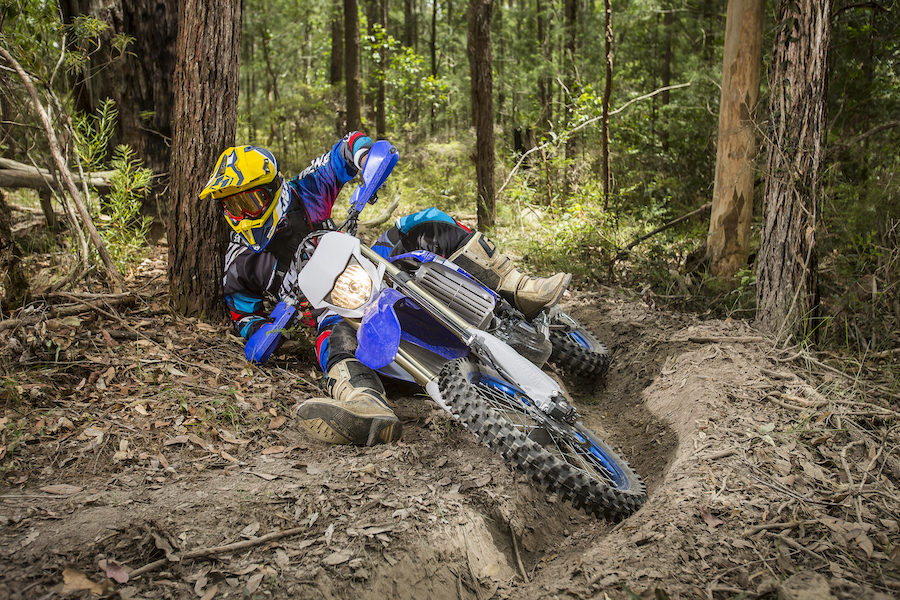
We emerged from the section bloody happy to be alive – I did, anyway – and impressed by a few things. The WR didn’t overheat during the painfully slow going. The clutch feel stayed consistent, even though I stand by my assertion it’s time for Yamaha to investigate hydraulic clutches, now. If it is going to allow us to tune our engine with a phone app, it’s time to allow us to enjoy the consistency and light weight of a well set-up hydraulic clutch. Even a lot of its roadbikes have cable clutches still.
Sure, the clutch is smoother and tougher than last model, with the weight lightly reduced, but it’s time to move on, I reckon.
The gearbox, on the other hand, is lovely with tight shifting and a lighter feel to the gear lever than before. I didn’t miss a gear in two days. I would have geared the bike shorter than our test units, though, which would let me run third gear more. I was in second too often.
We found our way back to the rest of the group, conventionally perched at the top of one last savage pinch of a rocky hill. I was buggered, people were watching and it was steep – a recipe for disaster.
Instead, another poor bugger who had made my decision regarding trails, sent his WR450F into orbit as the clutch hand gave out due to tiredness, and he parked it on the seat, to many roars of approval. Impressively the bike broke absolutely nothing. Except perhaps a rib or two from laughing…
We had topped up at lunch time but the bike’s range is good, with a 7.9L tank, expandable to 8.5L if you remove the filter inside the tank opening. That’s decent fuel capacity for an injected enduro bike, but like all modern machines, if you are a big-kay day rider, you will be fuel dumping or fitting bigger tanks.
Happily, that job we all hate is made easier with a single tool-less fastener to access the air filter and it’s right on top of the tank. It’s easy to get to, and makes a crap job more tolerable. The lid is between the seat and the head stock, and I actually found myself sitting on it at times – that’s how far forward you can get on this bike, which is impressive.
As mentioned, the ride position is probably one of the best in 450 circles and the only thing I’d prefer is more easily adjustable levers – you need tools. Like most enduro speedo units, I barely look at it, so therefore it does the (tiny) job it needs to.
I love having the engine map button on the left thumb. It spent most of the time in the milder Map Two, but thumbing into the wilder Map One for more open sections lets the smile spread wide, quickly.
The bike was easy to grab and drag over the seriously gnarly stuff I couldn’t ride over, it’s amongst the lightest, with a claimed weight of just 119kg, easily made even lighter with a dry cell battery (lead is standard). Most 450s weigh in around the 122kg (wet) mark and last year’s WR450F was a claimed 123kg, even with a smaller fuel tank. The kick starter was removed to shed that weight, along with a lighter fuel pump, swingarm and even sidestand!
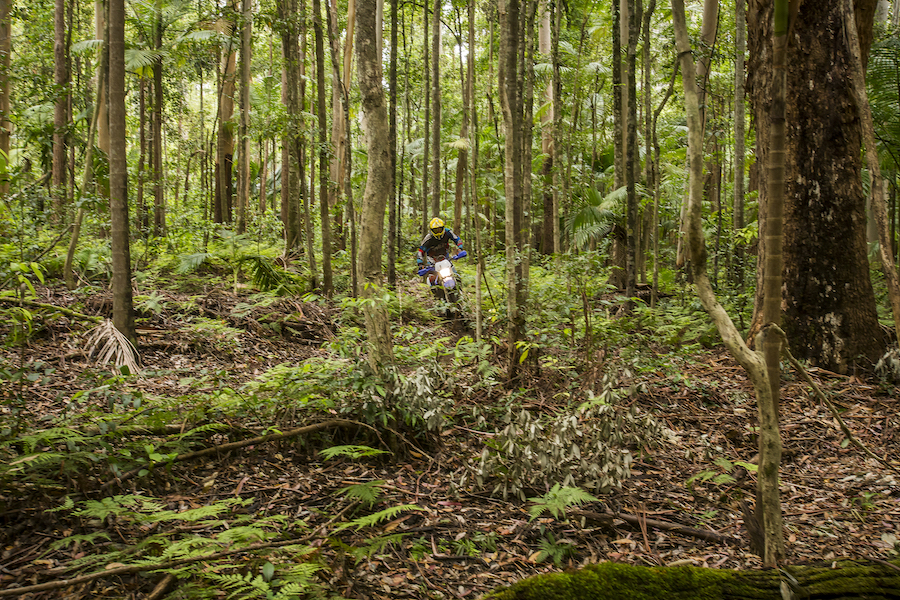
Yamaha’s WR450F ($13,299) has changed its character with this model and the last, from the softest of the 450 enduro range, to one of the hardest hitting, thanks to being based on the fire breathing motocrosser YZ450F. If you like a milder 450 in the bush, then there are other options. The more expensive ($15,590) Sherco Factory model is plusher, the KTM 450 EXC ($14,495) has better small bump feel and European bikes like the Beta ($13,195) have a more progressive power delivery.
The new seating position, extra fuel capacity and lighter weight all make for a better bike, even though I believe the average trailrider could have benefitted from even more compliant suspension settings. The jury is out on that, however, given the bikes were so new.
Those racing will certainly love it and without a doubt the ability to tune a dirtbike for the ever changing conditions you are faced with is an excellent feature. It is easy to share maps with mates, download off forums and simply text among each other.
It’s a weapon, with the legs, looks and grunt to propel you to new levels of performance in the bush. Weekend warriors will no doubt dull the engine response and suspension down to suit and find a capable bush bike for all kinds of terrain.
Yamaha’s WR450F has a legacy of well-built four-stroke enduro bikes to live up to, and this one is arguably the most potent of them all, along with some of the most impressive technological add-ons any dirtbike offers. If you go blue in the bush, you won’t be disappointed.
COMPETITION KIT
The Australian WR450Fs are supplied with the competition kit included, essentially converting it from a road-ready machine into an enduro-ready bike. It’s an impressive list.
- Lightweight LED tail light/ and licence plate holder
- Braided steel front brake line
- Competition larger diameter exhaust muffler outlet
- Full power / full travel throttle stopper screw
- YZ airfilter holder guide
- Brake snake kit
- Wiring connector for rear brake light (only required if ADR harness is fully removed)
- Barkbuster handguard set (instructions for fitting included in packaging)
- Front and rear brake line banjo bolts
- Taillight undercover
- Side stand bolt
- Engine stop switch
- Engine start switch
- Map switch
- 5 x 100mm zip ties for speedo sensor line attachment to brake line
Test SAM MACLACHLAN Photography iKapture
